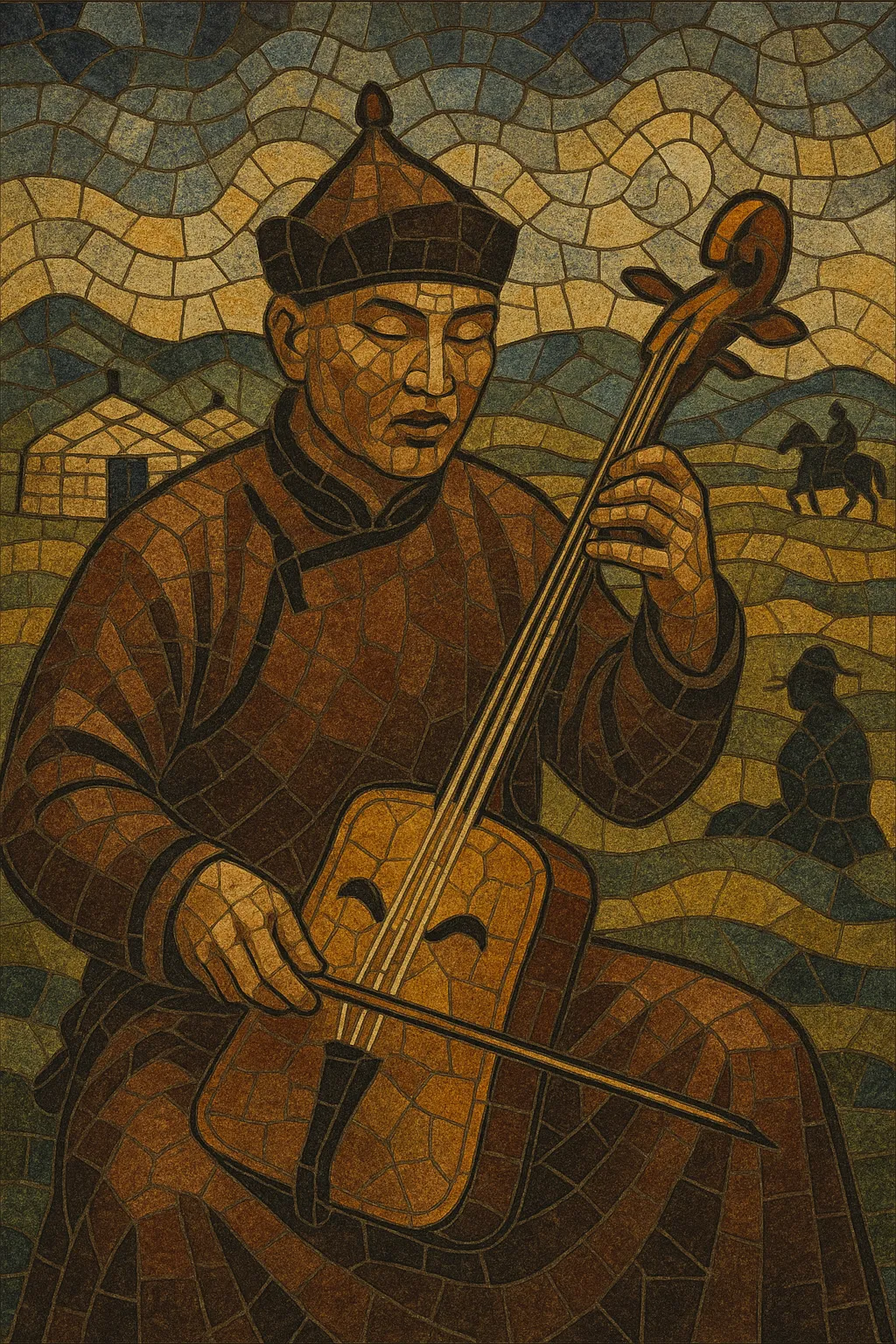Mongolian music encompasses the traditional vocal and instrumental practices of the Mongolian steppe, centered on the morin khuur (horsehead fiddle), long song (urtyn duu), short song (bogino duu), epic song (tuuli), and the overtone-rich vocal art of khöömii (throat singing).
Its melodic language is largely pentatonic, with expansive, arching phrases that evoke open landscapes, horses, and nomadic life. Textures range from solo voice with a sustained drone to heterophonic ensemble playing, and rhythms move fluidly between free, rubato narrative delivery and lively dance meters for bielgee (seated dance) and festive pieces.
Ritual and religious strands—especially Buddhist chant and older shamanic practices—intertwine with courtly and folk repertories shaped during and after the Mongol Empire, yielding a music that is at once intimate, contemplative, and epic in scale.
Mongolian music emerged from the lifeways of nomadic pastoralists on the steppe. Oral traditions of long song (urtyn duu), epic recitation (tuuli), and herding calls coalesced well before written documentation, but courtly patronage and intercultural contact under the Mongol Empire (1200s) helped consolidate instruments (notably the morin khuur) and ceremonial repertories.
From the 1500s onward, Tibetan Buddhism profoundly shaped musical life. Monastic chant, ritual horns, and drums influenced melodic contour, vocal production, and ceremonial performance, while shamanic elements persisted in local practice. Court ensembles at khanates and noble houses nurtured refined variants of long song, praise songs, and instrumental preludes.
In the late 19th and early 20th centuries, notated collections and emerging urban theaters began formalizing traditional genres. During the socialist era, state ensembles professionalized folk performance, standardizing tunings and forms for staged presentation and education, while ethnomusicologists documented regional styles and techniques such as khöömii and bielgee.
Since the 1990s, traditional musicians and ensembles have toured globally, and artists have fused morin khuur, khöömii, and long-song aesthetics with rock, metal, and electronic genres. This has broadened the international profile of Mongolian music while stimulating renewed interest at home in archival traditions and instrument making.
Compose primarily with an anhemitonic pentatonic palette, favoring spacious, arching melodies that suggest the steppe. Allow tones to bloom with sustained vibrato and glissandi, and use drones (instrumental or vocal) to ground the mode.
Employ long song (urtyn duu) style for expansive, rubato phrases with wide intervals and ornamented slides. For khöömii (throat singing), develop a stable low fundamental and shape overtones through precise mouth cavity and tongue positions; alternate between steady drones and melodic overtone contours to mirror natural sounds and wind.
Center the morin khuur for melodic leadership and drones; enrich timbre with tovshuur (lute), tsuur (end-blown flute), yatga (zither), and yoochin (hammered dulcimer). Bowing on the morin khuur should be supple, with expressive portamenti and flexible rhythm to support the voice.
Balance free-rhythm narrative delivery for long songs and epics with measured dance meters for bielgee and festive pieces (often in duple or compound feels). Structure songs in strophic or through-composed arcs; leave space for introductions and codas that feature improvised ornamentation.
Write lyrics that celebrate horses, herding, mountains, rivers, and seasonal cycles. Use metaphor and parallelism; maintain an honorable, contemplative tone. Epic forms can recount genealogies and heroic deeds, while shorter songs dwell on love, longing, and the beauty of the land.
Favor heterophony: let the voice and morin khuur share the melody with individual ornamentation. Use open fourths and fifths to emphasize resonance, and keep harmonic movement sparse. Record in a resonant space (yurt or hall) to capture natural bloom and overtones.


